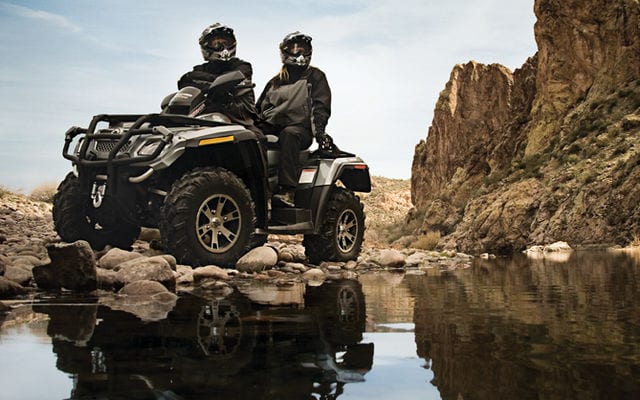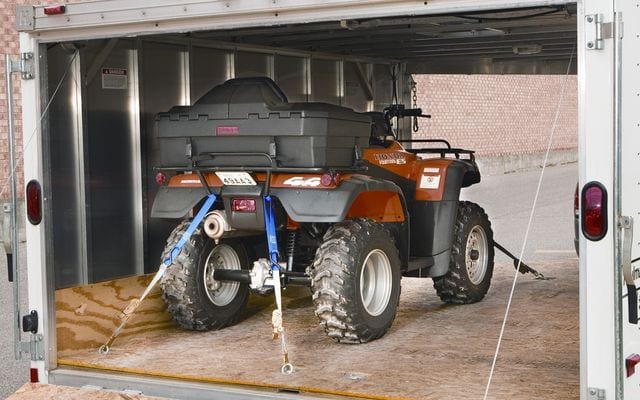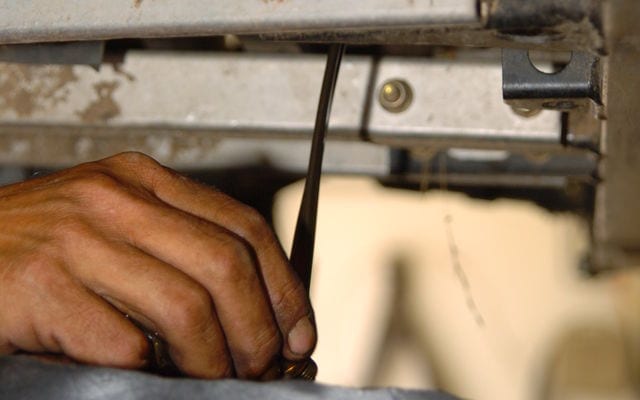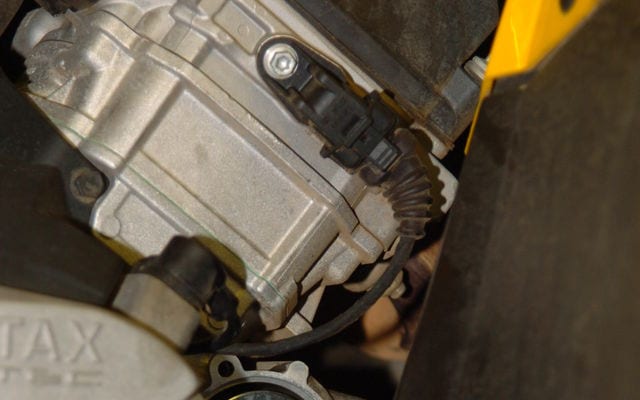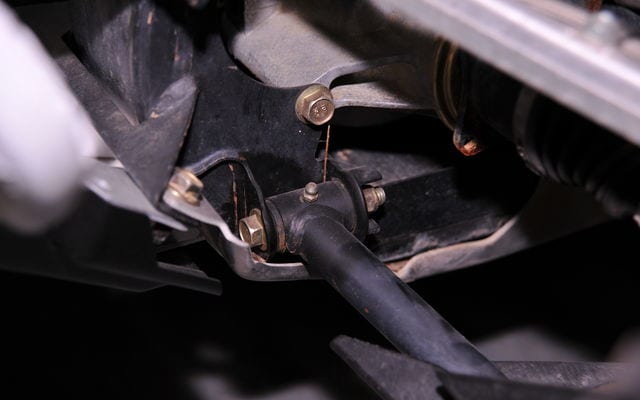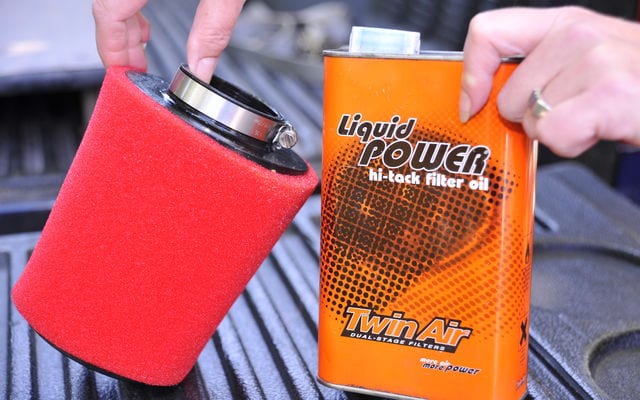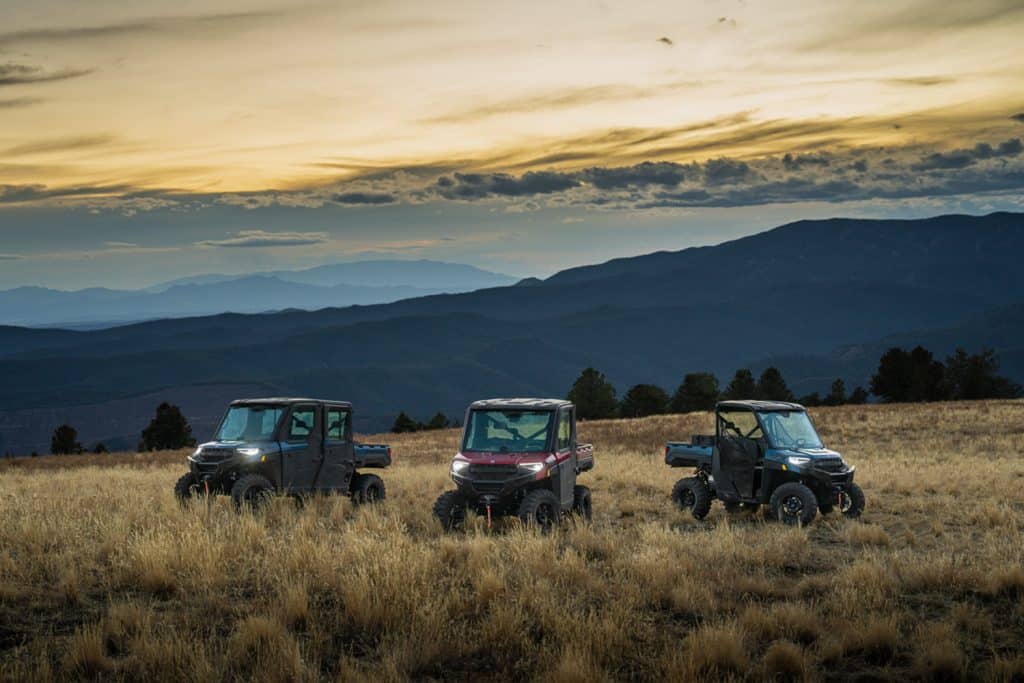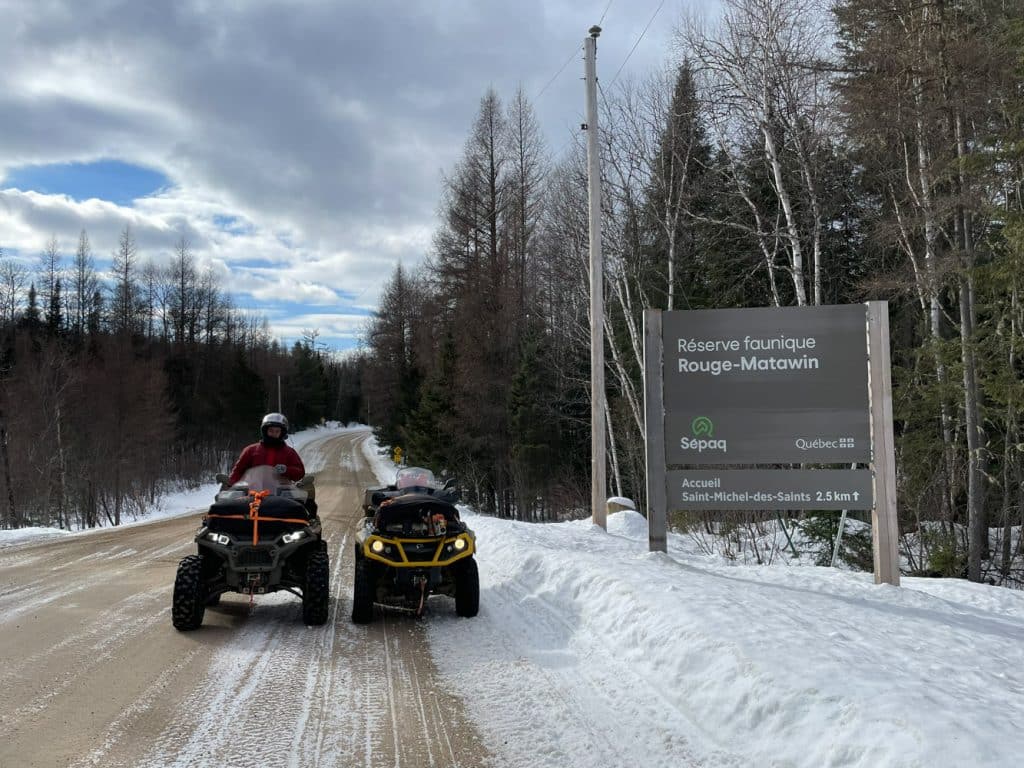Your brand new ATV doesn’t stay new forever. Once you ride it off the showroom floor, the maintenance clock starts ticking. ATV Trail Rider followed a 10 hour Maintenance check on a 2008 Can-Am Outlander at a BRP dealer (Bombardier Recreational Product).
Here is what we recommend.
• First, the oil change which also includes a new oil filter change as well. The oil used was BRP’s 5W-40 synthetic motor oil. Different ATVs have different requirements. Check your owner’s manual or shop manual for the recommended oil viscosities and temperature ranges.
• Some ATVs require an additional transmission oil change. The Outlander is one of these units and calls for non synthetic Ski-doo snowmobile chaincase oil.
• Check the front and rear differential hosing for the proper oil levels. Using 75W-90 oil for top ups.
• Lubricate all grease fittings. Most modern ATVs have grease fittings and doing this job is relatively an easy task. When pumping the new grease into the fitting, watch for excess grease to ooze out of the ends of the parts. Pushing out the old grease will remove dirt and moisture. Be sure to wipe these parts clean after lubricating; it is easier to clean at this point rather than later.
• Check your ATV’s steering components and suspension parts for tightness.
• Check your ATV’s antifreeze for the proper 50/50 strength or concentration.
• Changing the air filter. The Outlander comes from the factory with a paper type air filter. These filters work really well in automobiles, but for off roading the foam air filters are king.
Ask any dirt bike racer or ATV racer, they all use foam air filters and for good reasons. They offer top performance and long life. This foam air filter kit is a BRP part and is certainly recommended. Cleaning a dirty foam air filter is easy. First, clean the filter in varsol, by washing and wringing it out. Squeeze out any excess varsol, this removes dirty foam filter oil or grease. Secondly: clean the dirty filter in soapy water by washing and wringing out the soapy water. Once the filter is clean, let the filter air dry. Once dried, treat the clean foam filter with quality foam filter oil, like Twin Air oil.
Treating is easy, use a little at a time, squeezing the oil into every area of the foam. Be sure to squeeze out any excess oil treatment.
NOTE: foam filter oils have a solvent in their product, let the treated filter stand or gas off before installation. Now that you’ve completed your maintenance check, are you ready to take the road? Next up, are more useful tips on transporting your ATV. Carrying your ATV – Are you legal? This article has been prompted by recent information that some trail riders are transporting ATVs that are not tied down in their enclosed trailers. Applying the parking brake is not enough; and the law doesn’t recognize the parking brake as security feature. The law only recognizes a bona fide tie-down system. While researching this information, ATV Trail Rider found a document called the National Safety Code Standard 10 – Cargo Securement Standard, dated September 23, 2004. This document is used by the Provincial Ministries, Federal Motor Vehicle Groups, and police forces across Canada as a reference for defining different securing issues.
This multi-page document covers every possible truck and trailer issue and has a small section on transporting light vehicles. It states that a light vehicle shall be restrained at both the front and rear from moving sideways, forward, rearward, and vertically by using a minimum of two tie-downs: (i.e.) two tie-downs at the front and two tie-downs at the rear. An example that fulfils this is the 4×45 degree rule. This is a simple and accurate way to comply with the Cargo Securement Standard. Tying your recreational vehicle at 45 degrees in four locations completes a 360 degree securement. Following are some examples showing this process. Tough Tie-Downs Anyone who has used tie-downs on a regular basis over the past ten years knows that several of the latest versions aren’t what they used to be. The webbing is thinner and the hooks are smaller. The securement standard refers to the quality of your tie-down; the WLL rating or Working Load Limit. This refers to the strength of the tie-down. Basically, each tie-down needs to meet or exceed the weight of the transported light vehicle to each anchor point times four.
Here is a tip: quality tie-downs have a WLL tag that is located 18” from the hook and the tag will list the maximum WWL strength in pounds and kilograms. Enforcement Looking into the enforcement of this law across Canada was difficult. It seems that the western provinces and parts of Ontario have already laid charges on this issue of insecure loads. That would be one fine per recreational vehicle transported and each fine also includes demerit points (varies by province). At present, this looks like a start of things to come across Canada. To be sure check with your provincial authorities for up-to-date information, and please stay tuned as ATV Trail Rider will advise you of any further development.

